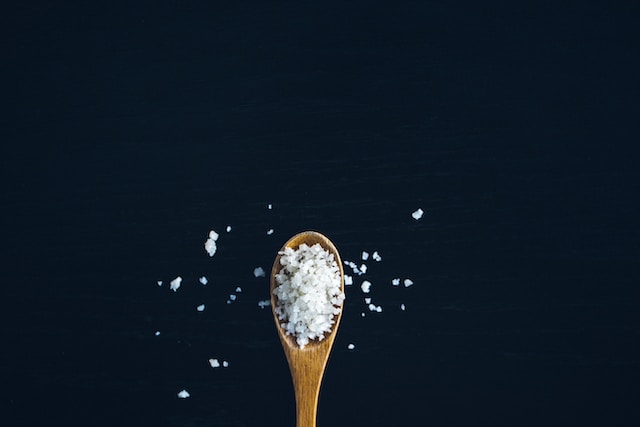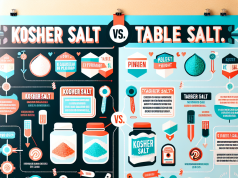Contents
The Science Behind Using Salt to Enhance Flavor in Your Cooking
Introduction
Salt is more than just a seasoning; it’s a crucial ingredient that plays a significant role in the art and science of cooking. While its primary function may seem straightforward—enhancing flavor—salt actually works on a deeper level. It influences our taste perception, helps balance flavors, and even affects the texture of food. Understanding the science behind salt can transform the way you cook, allowing you to create dishes that are not only delicious but also perfectly seasoned. In this article, we’ll explore how salt interacts with our taste buds, the types of salt available, and tips for using it effectively in your culinary endeavors.
The Role of Salt in Cooking
Salt has been a fundamental ingredient in cooking for centuries, not only for its ability to enhance taste but also for its various culinary functions. Understanding how salt interacts with food can elevate your cooking skills significantly.
Types of Salt
Different types of salt can impact your dishes differently. Here are some common types:
- Table Salt: The most common type, finely ground and often contains additives to prevent clumping.
- Sea Salt: Harvested from evaporated seawater, it often retains trace minerals that can enhance flavor.
- Himalayan Pink Salt: Known for its striking color and mineral content, it offers a unique taste profile.
- Kosher Salt: Preferred by chefs for its coarse texture, it dissolves quickly and can be easily controlled during seasoning.
How Salt Enhances Flavor
The science behind salt’s ability to enhance flavor lies in its chemical interactions with food molecules. Here are the primary ways salt works:
Sodium and Taste Perception
Sodium ions in salt interact with the taste receptors on our tongues, which can intensify sweetness and reduce bitterness, leading to a more balanced flavor profile. This is why salt is often added to sweet dishes as well.
Flavor Volatility
Salt can also enhance the aroma of food by affecting the volatility of certain compounds. When salt is added, it helps release aromatic compounds, allowing them to reach our olfactory receptors and increasing the overall flavor experience of the dish.
Moisture Retention
Salt has the ability to draw moisture out of ingredients, concentrating flavors. This is particularly beneficial in processes like brining, where proteins absorb salt and moisture, resulting in more flavorful and juicier meat.
The Science of Salting Techniques
Different cooking methods incorporate salt in various ways to maximize its benefits:
Brining
Brining involves soaking meat in a saltwater solution, which allows it to retain moisture during cooking. This technique is excellent for poultry and pork.
Seasoning During Cooking
Adding salt at various stages in the cooking process can enhance the layers of flavor within your dish. For example, seasoning vegetables while sautéing can deepen their natural sweetness.
Finishing Salt
Applying a pinch of finishing salt just before serving can provide a textural contrast and a burst of salty flavor that enhances the dish’s overall appeal.
Choosing the Right Amount of Salt
Proper salting ultimately depends on personal taste and the specific dish. A general guideline is to aim for a balanced flavor that supports the natural taste of the main ingredients without overpowering them.
Guidelines for Salting
- Start small: It’s easier to add more salt than to take it away.
- Taste as you go: This is essential to achieve the desired flavor.
- Consider the dish: Certain foods, like potatoes or pasta, can absorb more salt than others, meaning you’ll need to adjust accordingly.
Conclusion
Understanding the scientific principles behind salt and flavor enhancement can help you become a more skilled and intuitive cook. For further reading on the chemistry of cooking, visit Serious Eats.
FAQs about the Science Behind Using Salt to Enhance Flavor in Your Cooking
What role does salt play in flavor enhancement?
Salt acts as a flavor enhancer by reducing bitterness, balancing sweetness, and amplifying umami flavors in food. It interacts with taste receptors on the tongue, making flavors more pronounced.
How does salt impact the cooking process?
During cooking, salt can draw out moisture from ingredients, which helps to concentrate flavors. This process also assists in the Maillard reaction, which is responsible for browning and developing complex flavors in cooked foods.
Can different types of salt affect flavor differently?
Yes, different types of salt, such as sea salt, table salt, and kosher salt, have varying grain sizes and mineral compositions, which can lead to different flavor profiles and textures. For example, sea salt often contains trace minerals that can add subtle flavors.
Is there an optimal time to add salt during cooking?
The timing of adding salt can greatly affect flavor outcomes. Adding salt early in the cooking process can help to develop flavors, while adding it just before serving can enhance the perceived taste of the dish.
How much salt should I use for optimal flavor?
The amount of salt needed can vary based on personal preference and the ingredients used. It’s best to start with a small amount and adjust to taste, remembering that you can always add more but can’t take it out once it’s in.
Does salt actually make food taste better?
Yes, the right amount of salt can make food taste better by highlighting natural flavors and creating a more balanced dish. It’s a key component in culinary techniques and can elevate the overall dining experience.
What is Sea Salt?
Sea salt is a type of salt that is produced by the evaporation of seawater. It is often considered to be a more natural alternative to table salt, retaining trace minerals that can enhance its flavor.
How Is Sea Salt Harvested?
The process of harvesting sea salt involves collecting seawater and allowing it to evaporate under the sun or through mechanical means. This method can preserve the minerals found in seawater, making sea salt a preferred choice for many chefs and home cooks.
Uses of Sea Salt in Cooking
Sea salt can be used in various culinary applications, such as:
- Seasoning vegetables
- Enhancing the flavor of meats
- As a finishing touch on dishes
Its unique texture and mineral content can elevate the taste of your culinary creations.
Benefits of Using Sea Salt
Using sea salt in cooking offers several benefits:
- Flavor Profile: It often has a more complex flavor compared to regular table salt.
- Trace Minerals: Sea salt contains trace minerals beneficial for health.
For more information about salt varieties and their uses, check this Wikipedia page.
The Science Behind Using Salt to Enhance Flavor in Your Cooking
- Salt enhances taste by stimulating taste buds.
- It balances sweetness and reduces bitterness in food.
- Salt promotes the Maillard reaction, improving food color and flavor.
- It enhances aroma by increasing the release of volatile compounds.
- Salt helps retain moisture in foods, improving texture.
- Different types of salt (kosher, sea, table) have unique flavor profiles.
- Using salt at various stages of cooking can optimize flavor development.








































